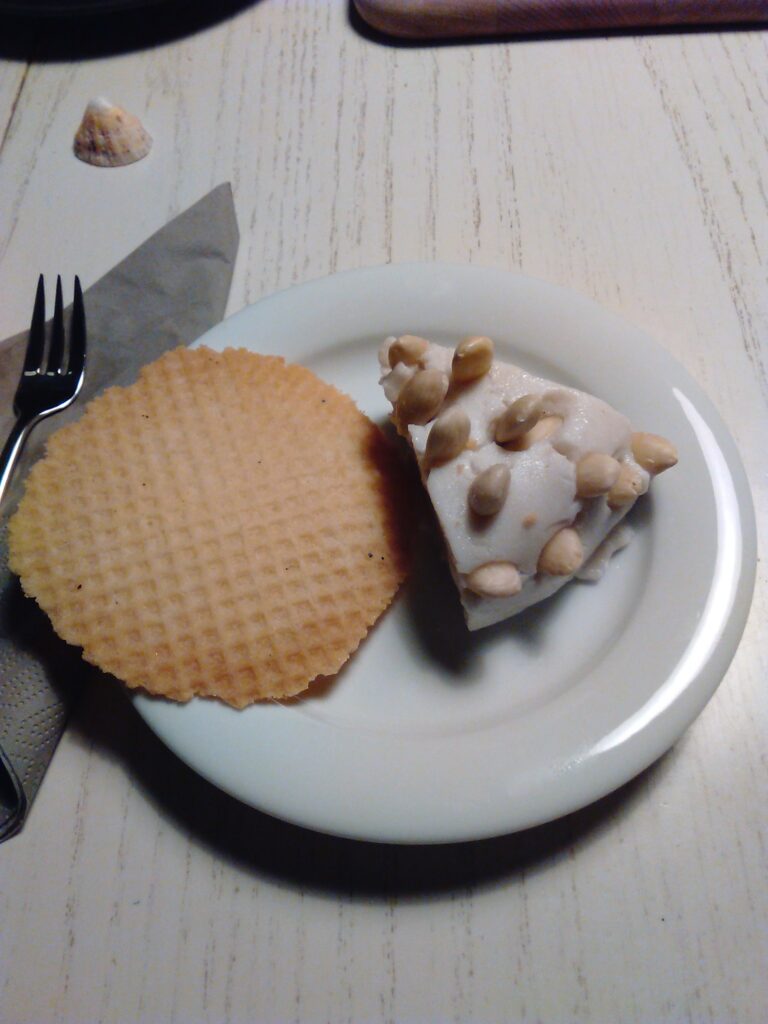Another recipe for almond ‘cheese’, this one is made with isinglass:
Recipe #3 wiltu habn ain mandel käeß den mach also

If you would have an almond cheese, make it thus
Item, if you would have an almond cheese, you must have isinglass (singular article – ain haussen platt) and two pounds of almonds of which you make the cheese. Grind the almonds finely and pass them through a white cloth. Take isinglass, one lot (unit of weight), you shall boil that in water, and you shall pass the almonds through with the isinglass cooking liquid, and you shall not let the (almond) milk boil. If you would have it sweet, take a quarter pound of sugar, that makes it sweet. And take a pound of almonds, those you shall blanch and stick the whole, white kernels to it, stick them into the cheese.
Add a thick (almond) milk to it and add a quarter pound of sugar to that, that makes it sweet. If you cannot find a small bowl, take a shallow plate (rindlein) that is glazed on the inside and pour the milk into that, Then it hardens in it and when you would have it, pour it out (invert it? schütt…umb) onto a serving bowl and add the milk and then stick the almond kernels onto the cheese.

Almond cheese is one of the recipes that are far more common in the cookbooks than they could ever have been in reality. Basically, these are showy Lenten dishes that use almond milk or almond solids to simulate fresh cheese curds served with milk or whey. We have many surviving versions using different ways to give cohesion to the almond mass, including grated bread, rice flour, and acid coagulation. The version from Meister Hans is an early instance of using gelatin in the form of isinglass which would become standard by the sixteenth century.
Viewed from a modern perspective, it is hard to see what is so exciting about a dish of jello in sweetened fake milk. By contemporary lights, though, this was highly fashionable and noteworthy cuisine: Almonds and sugar were both luxury ingredients, and the process of blanching the almonds and turning them into almond milk required a good deal of time and skill. White foods in general carried status because they were uncommon. Before industrial refining processes, almost nothing in the kitchen was white, and milk, cheese, flour, rice, or sugar had to be processed to get them there. Gelatin, too, was a relatively new and interesting ingredient that cooks were still exploring. Finally, in a world of strict Lenten fasts the idea of having cheese on the table on fast days was a novelty in itself. The appeal must have been enormous.
One of the most extensive and interesting medieval recipe collections in German is a manuscript dated 1460 and ascribed to one Meister Hans, cook at the Wurttemberg court. It was often treated as a solitary, the work of a single cook, but there are too many parallels with contemporary manuscripts from Southern Germany to make this plausible. The recipes are an eclectic mix, many terse and simple, others detailed and sprinkled with anecdotes. The entire text was newly edited and extensively commented for Tupperware Deutschland by Trude Ehlert: Maister Hansen des von Wirtenberg Koch, Frankfurt (Main) 1996.
